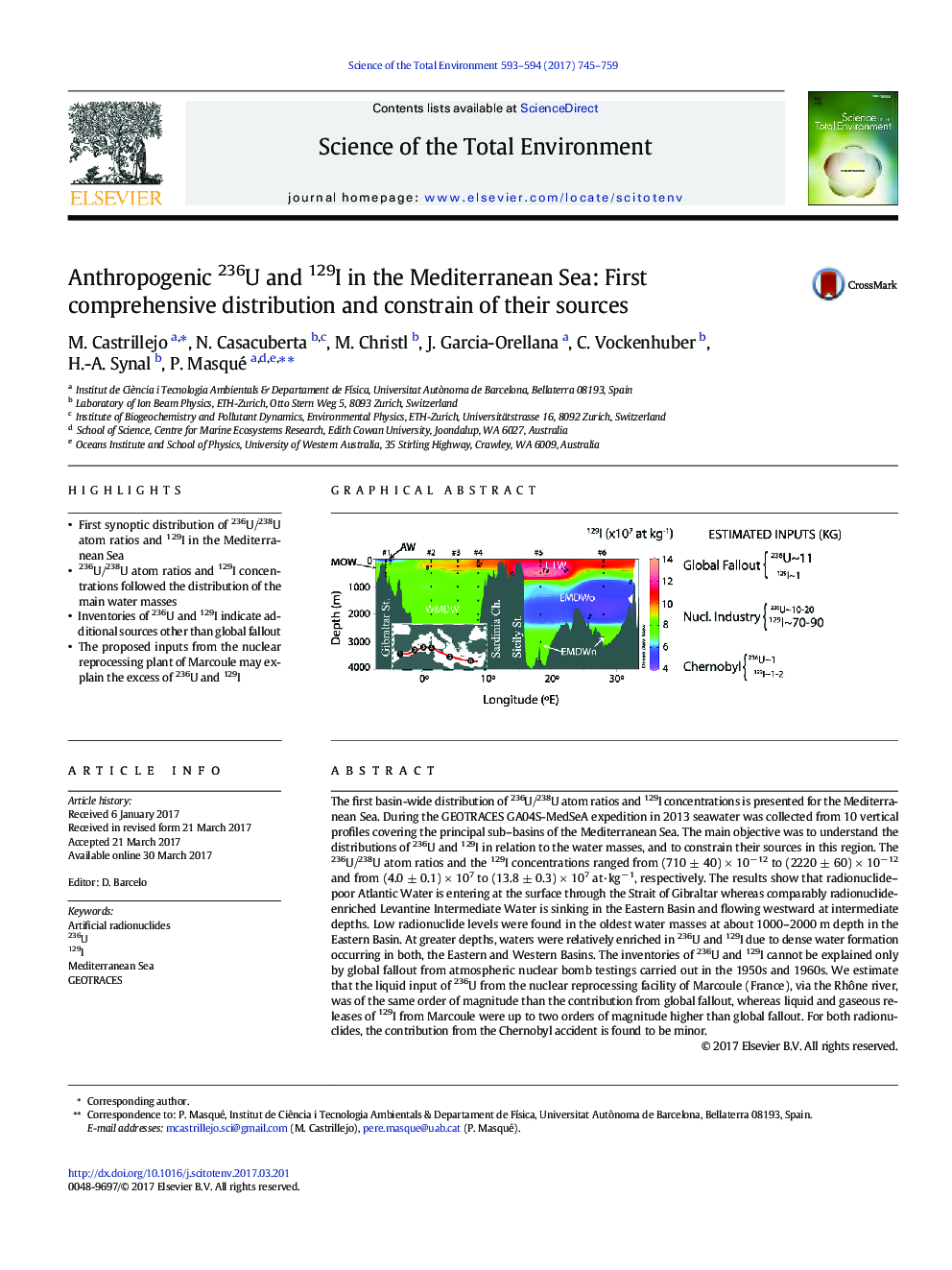| کد مقاله | کد نشریه | سال انتشار | مقاله انگلیسی | نسخه تمام متن |
|---|---|---|---|---|
| 5750903 | 1619702 | 2017 | 15 صفحه PDF | دانلود رایگان |

- First synoptic distribution of 236U/238U atom ratios and 129I in the Mediterranean Sea
- 236U/238U atom ratios and 129I concentrations followed the distribution of the main water masses
- Inventories of 236U and 129I indicate additional sources other than global fallout
- The proposed inputs from the nuclear reprocessing plant of Marcoule may explain the excess of 236U and 129I
The first basin-wide distribution of 236U/238U atom ratios and 129I concentrations is presented for the Mediterranean Sea. During the GEOTRACES GA04S-MedSeA expedition in 2013 seawater was collected from 10 vertical profiles covering the principal sub-basins of the Mediterranean Sea. The main objective was to understand the distributions of 236U and 129I in relation to the water masses, and to constrain their sources in this region. The 236U/238U atom ratios and the 129I concentrations ranged from (710 ± 40) Ã 10â 12 to (2220 ± 60) Ã 10â 12 and from (4.0 ± 0.1) Ã 107 to (13.8 ± 0.3) Ã 107 at·kgâ 1, respectively. The results show that radionuclide-poor Atlantic Water is entering at the surface through the Strait of Gibraltar whereas comparably radionuclide-enriched Levantine Intermediate Water is sinking in the Eastern Basin and flowing westward at intermediate depths. Low radionuclide levels were found in the oldest water masses at about 1000-2000 m depth in the Eastern Basin. At greater depths, waters were relatively enriched in 236U and 129I due to dense water formation occurring in both, the Eastern and Western Basins. The inventories of 236U and 129I cannot be explained only by global fallout from atmospheric nuclear bomb testings carried out in the 1950s and 1960s. We estimate that the liquid input of 236U from the nuclear reprocessing facility of Marcoule (France), via the Rhône river, was of the same order of magnitude than the contribution from global fallout, whereas liquid and gaseous releases of 129I from Marcoule were up to two orders of magnitude higher than global fallout. For both radionuclides, the contribution from the Chernobyl accident is found to be minor.
281
Journal: Science of The Total Environment - Volumes 593â594, 1 September 2017, Pages 745-759